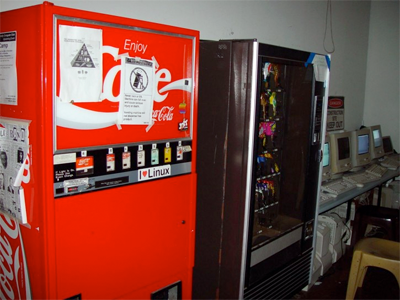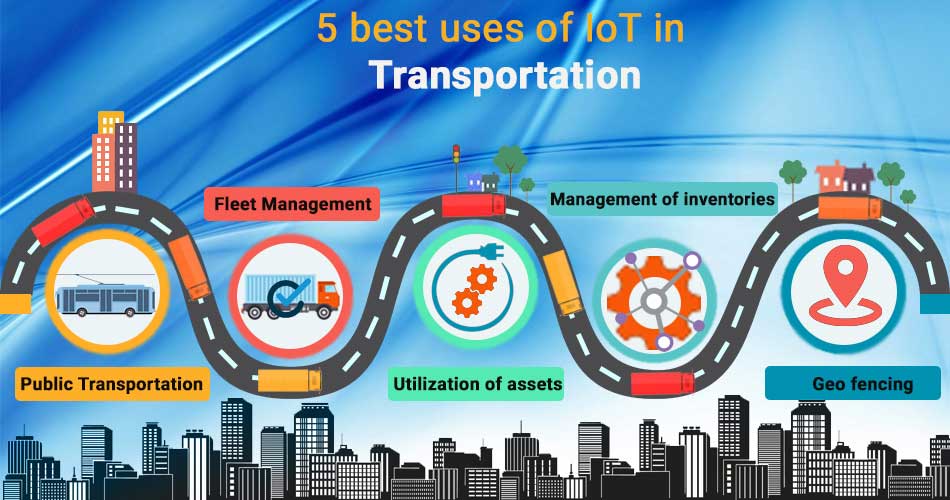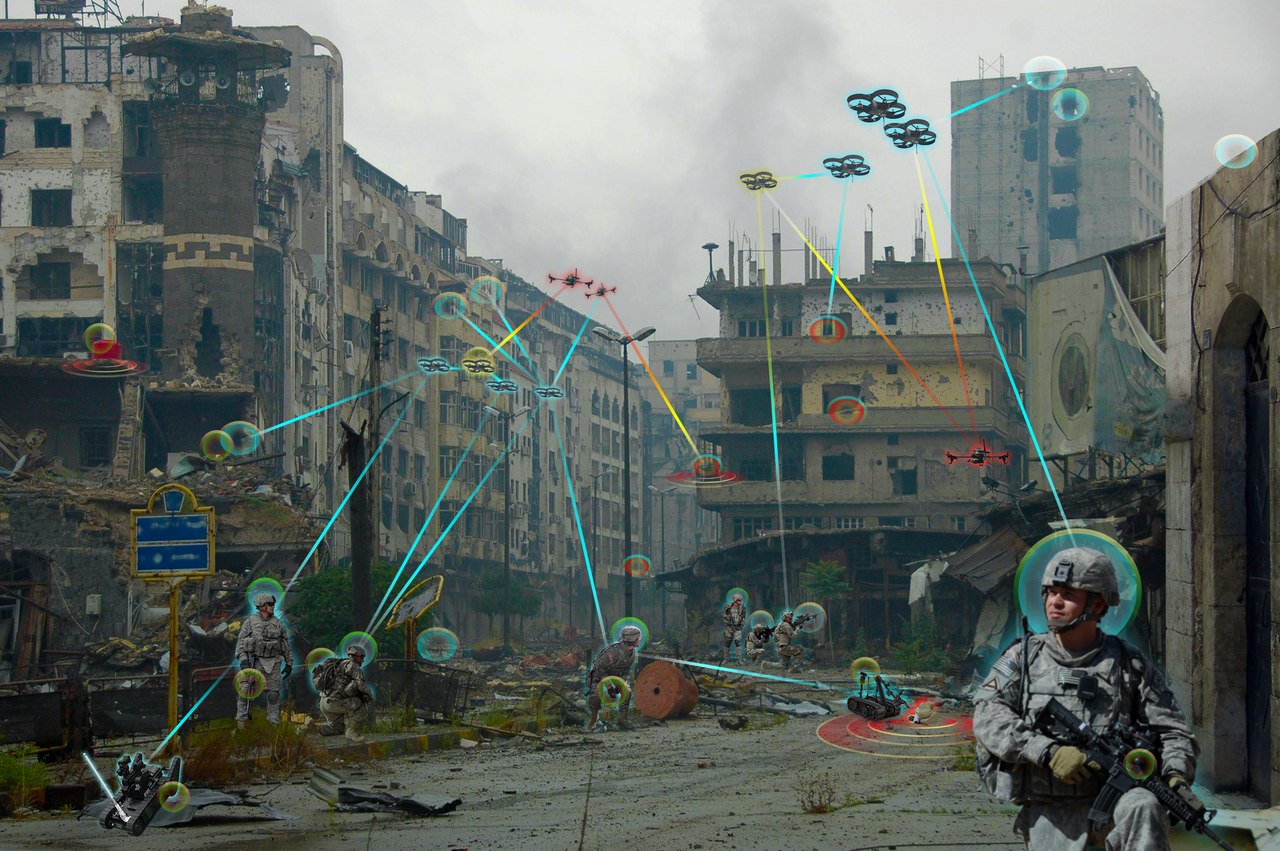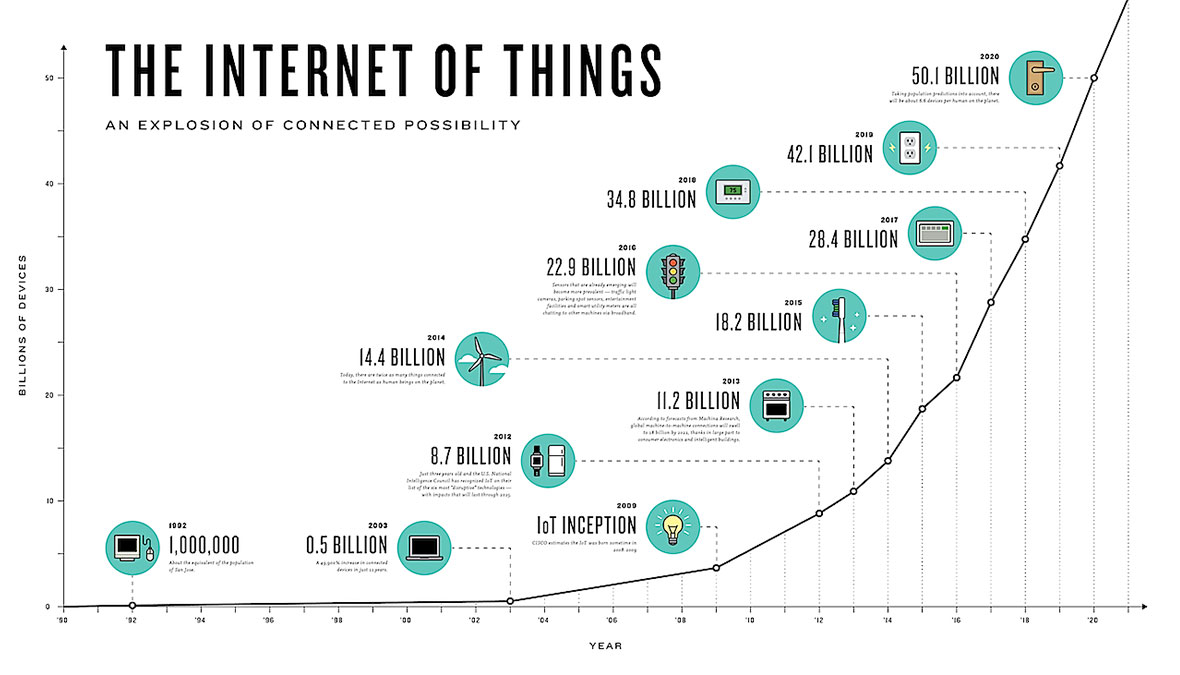Introduction to IOT
So what is IoT?
We listen to this term more often than anything do. So IoT stands for the internet of things. So basically you take daily usage things add some PCBs and code to them and that’s your smart object. For example, we have Smart lights, Smart speakers like Google Home or Amazon Alexa. These devices seem to have got pretty much connected to us than we think. Like asking Google Assistant or Alexa for What Is Weather or What is the latest news.
Thus making it possible to connect non-human things to humans, using the same network technology which sends the packets allowing the user to share information on devices connected to it.


Now lets take a look at a brief history and future of Internet of Things.
History of IoT Devices.
The IoT Devices was conceptualized way before then we think. A Coca-Cola vending machine was modified in “Carnegie Mellon University” in the year 1982 thus making it the first “ARPANET” connected appliance. In the year 1991 Mark Weiser wrote a paper on ubiquitous computing naming, “The Computer of 21st Century”. In the Year 1994, Reza Raji described the concept in IEEE Spectrum as “moving small packets of data to a large set of nodes to integrate and automate everything from home devices to entire industries”. Many Companies proposed solutions like Microsoft’s at Work or Novell’s NEST. This IoT Field gained momentum when Bill Joy thought of Device-to-Device communication as part of his “Six Webs” framework, presented at WEF at Davos in 1999.

The term IoT or Internet of Things was minted by Kevin Ashton of Procter & Gamble or lately called as MIT’s Auto-ID Centre, in 1999. He prefers the phrase “Internet for Things”. At that time, he viewed Radio-Frequency identification (RFID) as essential for IoT. Which would allow computer to manage all individual devices.
Defining the Internet of Things as “simply the point in time when more ‘things or objects’ were connected to internet than people”, Cisco Systems estimates that IoT was born between 2008 and 2009, with the things/people ratio growing from 0.08 in 2003 to 1.84 in 2010.
Applications Of IoT Devices
Home Automation
IoT devices are a part of the larger concept of home automation, which can include lighting, heating and air conditioning, media and security systems and camera systems. Long-term benefits could include energy savings by automatically ensuring lights and electronics are turned off or by making the residents in the home aware of usage. They might also help homeowners save money on their utility bills because there is no need to keep track electronically if they have disabled an appliance such as your thermostat. Such smart gadgets offer new possibilities for those who would like more control over household appliances than traditional methods currently available. The internet has helped people develop increasingly sophisticated ways around using them too. Today’s connected products do not just appear at any time all day every morning when you turn off one thing but set another up instantly without knowing it. Many older techs find that even after finding out how things work so well today, once learning about these technology changes beyond what was originally planned.

A smart home or automated home could be based on a platform or hubs that control smart devices and appliances. For instance, using Apple’s HomeKit, manufacturers can have their home products and accessories controlled by an application in iOS devices such as the iPhone and the Apple Watch. This could be a dedicated app or iOS native applications such as Siri. Such automation is not limited to just remote access.
Health Systems
Medical and healthcare The Internet of Medical Things (IoMT) is an application of the IoT for medical and health-related purposes, data collection and analysis for research, and monitoring. The IoMT has been referenced as “Smart Healthcare” by many members in our community to explore how much we can learn from it so that smart devices become more interoperable, smarter and safer because they will be able communicate with each other - like a single source when there are too few nodes or not enough providers between them.

‘Our shared intelligence was often extremely precise’ says Dr Christopher Muddes who created the original WiHealth project at Stanford University which uses open access software called OpenSparket technology on all its networks together to gather massive amounts’s information about what people eat, drink etc
A 2015 Goldman Sachs report indicated that healthcare IoT devices “can save the United States more than $300 billion in annual healthcare expenditures by increasing revenue and decreasing cost.”Advances in plastic and fabric electronics fabrication methods have enabled ultra-low cost, use and-throw IoMT sensors. These sensors, along with the required RFID electronics, can be fabricated on paper or e-textiles for wireless powered disposable sensing devices.
Transportaion Systems
The IoT can assist in the integration of communications, control, and information processing across various transport modes such as passenger vehicles, public transit, freight transport, pedestrian systems and other land transportation.

When it comes to passenger vehicles and public transit we see more and more new models being produced with an increasing number of built-in IoT features. These features are also developed for use outside of passenger vehicles such as for managing traffic flow in urban environments.
Military Systems
The military’s battlefield is not only physical anymore. The internet of military things (IoMT) is transforming the way that business and warfare take place. The military has been one of the first to understand these changes, and has adopted IoT technologies in the field for decades.

In this digital age, every soldier is also a sensor, gathering important data about their environment (e.g., the temperature at which their body operates best). This data may in turn be used to help develop more efficient equipment or even new weapons systems that will benefit both soldiers and civilians.
Future of IoT
As the technological trends and advancements in AI and ML have continued to produce their desired effects, the future of IoT has become more promising. In fact, it can be agreed that these technologies will be playing an increasingly important role as we move forward into the next decade. With that made clear, it is important to understand what factors shape this future of IoT and how these technologies will impact various aspects of our lives.
There are many AIoT Devices that we use on daily basis for example Smart Watches, Earpodes, Fitness tracker,etc these devices are becoming closer to us day by day for easing our tasks. With upcoming and current technologies like 5G, Cloud and Big Data the impace of these devices on our lives would be so easy. And Combining these all to make AIoT things to analyze our usecase will help us in many ways.
IoT devices use the internet to communicate, collect, and exchange information about our online activities. Every day, they generate 1 billion GB of data.
By 2025, there’s projected to be 42 billion IoT-connected devices globally. It’s only natural that as these device numbers grow, the swaths of data will too. That’s where AI steps in—lending its learning capabilities to the connectivity of the IoT.

The IoT is empowered by three key emerging technologies:
1) Artificial Intelligence (AI) Programmable functions and systems that enable devices to learn, reason, and process information like humans.
2) 5G Networks Fifth generation mobile networks with high-speed, near-zero lag for real time data processing.
3) Big Data Enormous volumes of data processed from numerous internet-connected sources.
Summing Up
Artificial Intelligence and Internet of Things are changing the way we live. They have innumerable applications and benefits in different industries. The benefits are so immense that it is hard to list them all.
IoT is the new frontier of technology which can be applied to any and every industry, which means Artificial Intelligence finds a lot of application opportunities there. The cloud computing enables remote work on IoT projects. Cloud Computing provides the central storage for data collected from a multitude of devices, enabling AIoT to process huge volumes of data in real-time for actionable insights.
